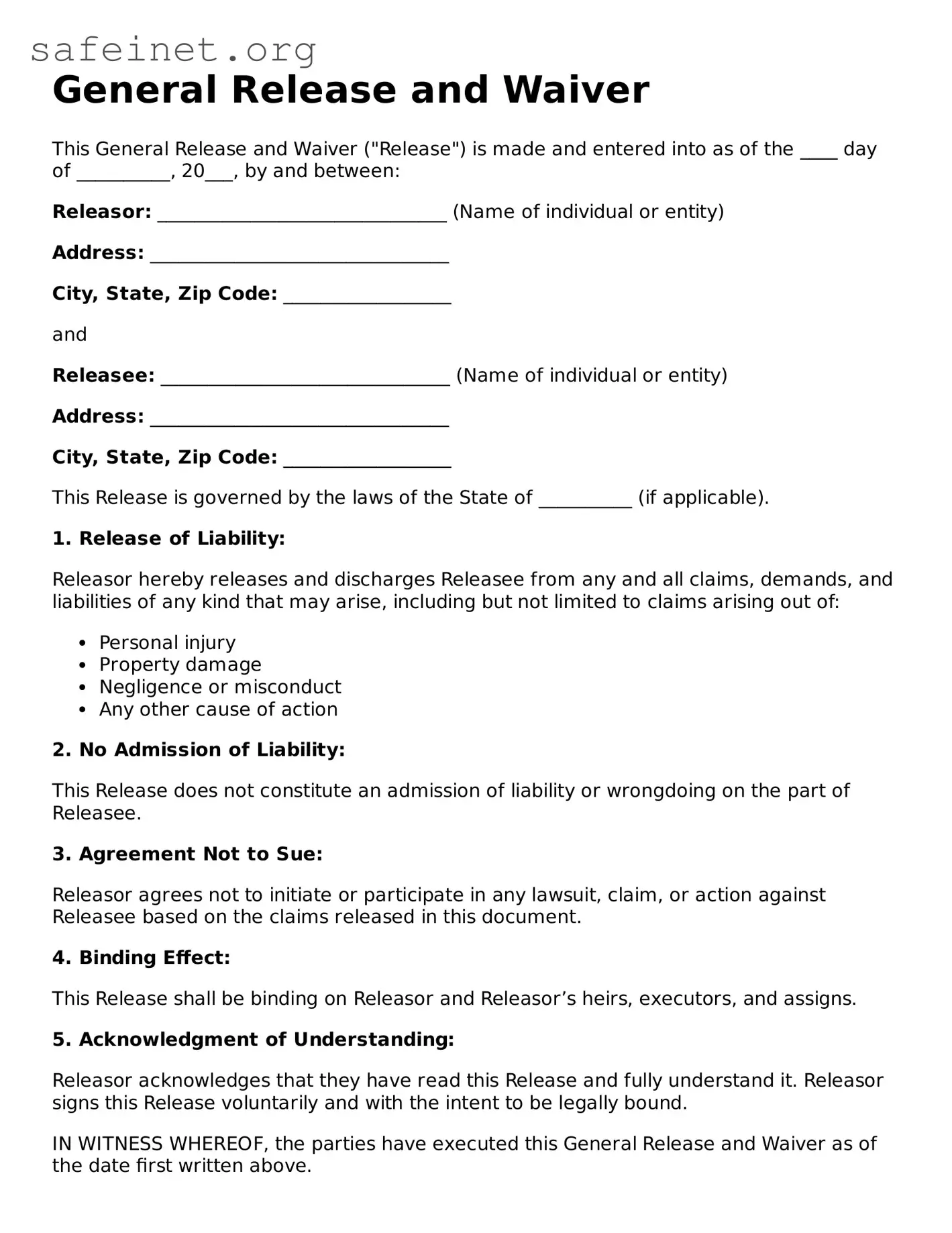General Release and Waiver
This General Release and Waiver ("Release") is made and entered into as of the ____ day of __________, 20___, by and between:
Releasor: _______________________________ (Name of individual or entity)
Address: ________________________________
City, State, Zip Code: __________________
and
Releasee: _______________________________ (Name of individual or entity)
Address: ________________________________
City, State, Zip Code: __________________
This Release is governed by the laws of the State of __________ (if applicable).
1. Release of Liability:
Releasor hereby releases and discharges Releasee from any and all claims, demands, and liabilities of any kind that may arise, including but not limited to claims arising out of:
- Personal injury
- Property damage
- Negligence or misconduct
- Any other cause of action
2. No Admission of Liability:
This Release does not constitute an admission of liability or wrongdoing on the part of Releasee.
3. Agreement Not to Sue:
Releasor agrees not to initiate or participate in any lawsuit, claim, or action against Releasee based on the claims released in this document.
4. Binding Effect:
This Release shall be binding on Releasor and Releasor’s heirs, executors, and assigns.
5. Acknowledgment of Understanding:
Releasor acknowledges that they have read this Release and fully understand it. Releasor signs this Release voluntarily and with the intent to be legally bound.
IN WITNESS WHEREOF, the parties have executed this General Release and Waiver as of the date first written above.
Releasor Signature: ___________________________
Date: ___________________________
Releasee Signature: ___________________________
Date: ___________________________
